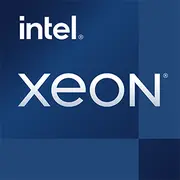Intel Xeon E3-1545M v5

인텔 제온 E3-1545M v5: 모바일 워크스테이션을 위한 프로세서. 종합 분석
2025년의 가능성, 사용 시나리오 및 적합성 분석
아키텍처 및 제조 공정: 스카이레이크의 소형화
2016년에 출시된 인텔 제온 E3-1545M v5 프로세서는 여전히 "워크스테이션"급 노트북에서 사용됩니다. 이 아키텍처는 스카이레이크(6세대 인텔 코어) 마이크로 아키텍처와 14nm 제조 공정을 기반으로 합니다.
- 코어 및 스레드: 4개의 코어와 하이퍼 스레딩 덕분에 8개의 스레드를 지원합니다. 기본 클럭 속도는 2.9GHz, 터보 모드에서의 최대 클럭 속도는 3.8GHz입니다.
- 캐시 메모리: 8MB L3 캐시는 멀티스레드 작업에서 성능을 개선합니다.
- 통합 그래픽: 72개의 실행 유닛(EU)과 128MB의 eDRAM을 갖춘 아이리스 프로 그래픽스 P580. DirectX 12, OpenGL 4.5 및 4K 디스플레이를 지원합니다.
스카이레이크의 특징:
- 이전 세대에 비해 IPC(클럭당 명령 수)가 5-10% 향상되었습니다.
- ECC(오류 수정 코드)를 포함한 DDR4-2133 및 DDR3L-1600 메모리를 지원하여 워크스테이션에 필수적입니다.
- 원격 관리 및 보안을 위한 인텔 VPro 기술.
전력 소비 및 TDP: 파워와 자율성의 균형
프로세서의 TDP는 45W입니다. 이는 전형적인 모바일 CPU(15-28W)보다 높지만 데스크톱 제온보다 낮습니다.
- 열 발산: 효과적인 냉각 시스템이 필요합니다. 컴팩트한 노트북에서는 부하가 걸릴 경우 스로틀링이 발생할 수 있습니다.
- 에너지 효율성: 인텔 스피드 시프트(빠른 클럭 전환) 및 적응형 열 모니터링(온도 제어) 기술이 대기 모드에서 전력 소비를 줄이는 데 도움을 줍니다.
성능: 실제 작업과 터보 모드
Geekbench 6 평가(1248 / 3967)에 따르면, 이 프로세서는 현대의 작업을 처리하는 데 적합하지만 최신 모델에는 밀립니다.
사무 작업 및 멀티태스킹
- Chrome에서 20개 이상의 탭 및 포토샵 실행: 지연시간이 최소화됩니다.
- PowerPoint 프레젠테이션 렌더링: 모든 코어에서 85-90%의 부하.
멀티미디어
- HandBrake에서 4K 비디오 변환: 10분 비디오에 약 25분 소요(H.265).
- Adobe Premiere에서 작업: 효과가 있는 부드러운 편집이 가능하지만 렌더링에는 전용 GPU가 필요합니다.
아이리스 프로 P580에서의 게임
- CS:GO (1080p, 중간 설정): 45-55 FPS.
- 오버워치 (720p, 낮은 설정): 30-40 FPS.
- 중요: eDRAM은 텍스처링을 가속화하지만 2025년에 출시될 AAA 게임을 실행할 성능은 부족합니다.
터보 부스트: 짧은 부하(예: 큰 파일 열기)가 걸릴 때 클럭 속도가 3.8GHz로 증가합니다. 그러나 5분 이상의 지속적인 작업에서는 열 때문에 3.2-3.5GHz로 감소합니다.
사용 시나리오: 제온 E3-1545M v5는 누구에게 적합할까?
- 엔지니어 및 디자이너: CAD 애플리케이션(오토캐드, 솔리드웍스)은 안정적으로 작동하지만 복잡한 프로젝트에는 최신 CPU가 더 나은 선택입니다.
- 비디오 편집자: 1080p 편집에는 적합하지만 4K 비디오는 전용 그래픽 카드 없이는 버벅거릴 것입니다.
- 분석가: 엑셀 또는 파이썬(Pandas)에서 중간 규모 데이터 처리(최대 100만 행).
추천하지 않음:
- 하드코어 게이머(RTX 4050+ 필요).
- AI/신경망 작업(텐서 코어 또는 NPU 지원 없음).
자율성: 노트북은 얼마나 오래 사용할 수 있을까?
TDP가 45W인 이 경우 배터리 작동 시간은 배터리 용량에 크게 의존합니다:
- 웹 서핑: 5-6시간(60W·h 배터리 기준).
- 비디오 (1080p): 최대 7시간(퀵 싱크 기술이 CPU를 덜 사용하게 함).
- 부하 (렌더링): 1.5-2시간.
전력 절약:
- Windows의 "전력 절약" 모드는 클럭 속도를 1.2GHz로 낮춥니다.
- 터보 부스트를 끄면 자율성이 20-30% 증가합니다.
경쟁 제품과의 비교
AMD 라이젠 5 프로 5650U (2021):
- 6코어 / 12스레드, 15W TDP.
- 멀티스레드 작업에서 더 좋음(+15%의 Cinebench R23), 그러나 iGPU(베가 7 vs 아이리스 프로 P580)가 약함.
애플 M1 (2020):
- 8코어(4+4), 10W TDP.
- Geekbench 6: 약 2300 / 8300. 성능과 자율성이 크게 향상되지만 Windows 소프트웨어와의 제한된 호환성.
인텔 코어 i7-11800H (2021):
- 8코어 / 16스레드, 45W TDP.
- 멀티태스킹에서 30-40% 더 빠르지만 더 비쌈.
결론: 제온 E3-1545M v5는 최신 CPU에 비해 성능이 떨어지지만 안정성과 ECC 메모리 지원에서 우위를 점합니다.
장단점
장점:
- 안정성 및 ECC 지원.
- 자신의 클래스에서 강력한 통합 그래픽.
- 전문 소프트웨어(예: MATLAB, ANSYS)와의 호환성.
단점:
- 울트라북에 비해 높은 열 발산.
- PCIe 4.0 및 썬더볼트 4 지원 없음.
- 가격: 이 CPU를 탑재한 노트북은 $1200부터 시작 (2025년형 새 모델인 Dell Precision 3520M).
노트북 선택에 대한 권장 사항
- 기기 유형: 워크스테이션(Dell Precision, HP ZBook) 또는 프리미엄 비즈니스 노트북(레노버 씽크패드 P50).
- 주의할 점:
- 냉각 시스템(팬 두 개 및 구리 파이프).
- 메모리 용량: 최소 16GB DDR4.
- 드라이브: NVMe SSD (512GB 이상).
- 화면: 100% sRGB를 지원하는 IPS 패널.
최종 결론
2025년, 인텔 제온 E3-1545M v5는 안정성과 전문 기능지원(ECC, vPro)이 중요한 사용자에게 적합한 선택입니다. 다음 사용자에게 알맞습니다:
- 현장에서 작업하는 엔지니어들.
- 사진/비디오를 처리할 수 있는 이동성이 필요로 하는 프리랜서들.
- 제한된 예산으로 노트북을 갱신해야 하는 기업들.
대안: 예산이 허락된다면, 라이젠 7 PRO 6850U 또는 애플 맥북 프로 M3를 고려해 보세요. 이들은 더 빠르고 더 효율적입니다. 하지만 특정 작업에는 제온 E3-1545M v5가 신뢰할 수 있는 선택으로 남아 있습니다.
기초적인
CPU 사양
메모리 사양
GPU 사양
여러 가지 잡다한
벤치마크
다른 CPU와 비교
소셜 미디어에서 공유하기
또는 링크로 소개하기
<a href="https://cputronic.com/ko/cpu/intel-xeon-e3-1545m-v5" target="_blank">Intel Xeon E3-1545M v5</a>